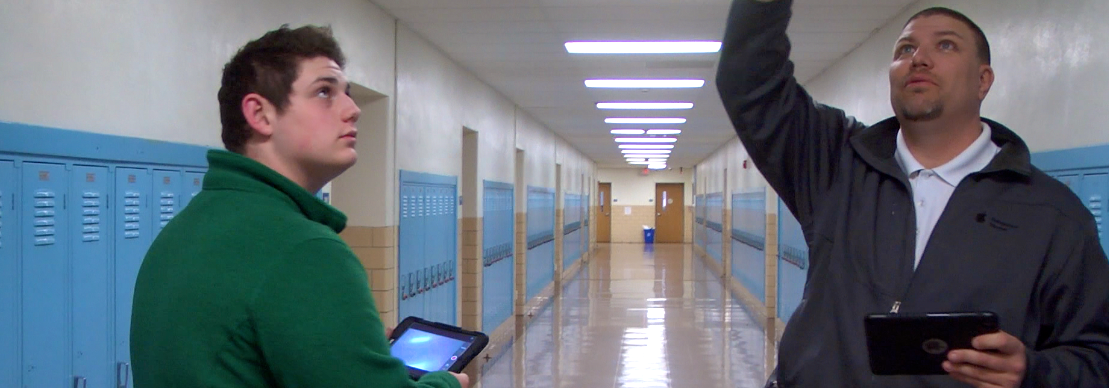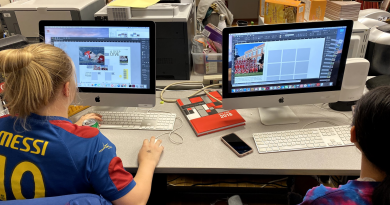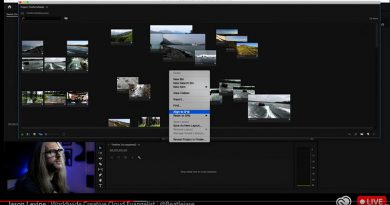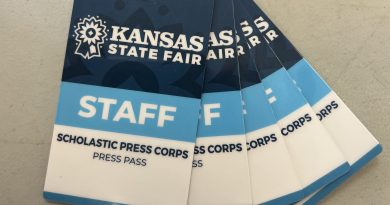Mini-lessons for advisers when news cycles are slow: Light for videos

Fiat lux is the Latin phrase for “Let there be light.”
Although this phrase may be referring to a deeper meaning, let’s help our students understand the importance of light when recording our videos.
Television studios with expensive lights are great, and while taking portable lighting kits with us out on a shoot would be amazing, the reality is we will most likely only have natural light available to our students for the production of their videos.
In this mini lesson, students can learn about and practice the main ways to better utilize the light that is available to them during their shoots.
Objective
Students will learn about light for their video shoots, plan for utilizing light to their advantage for their stories, and finally go out to practice on their own.
The mini-lesson
1. Begin by having your students recite this mantra: “The main light source goes behind the camera, not my subject!”
If your students remember NOTHING else but this mantra, they will be successful. Most times we will only have the sun, or a fluorescent light, or a lamp to use for our MAIN light source. In other words, we may only have ONE main light source on our shoot. When this is the case, make sure that MAIN light source is always BEHIND THE CAMERA, not the subject.
2. Next students should read the article The Standard 3-Point Lighting Technique and watch the accompanying video.
The most important lesson here is to understand the concept of why you should try to find light for these three areas of your subject while recording. The reality is our students may not be able to provide light to these three areas. If you can, please do! But if you can’t, at least understand the premise so your students can find light in the locations they record to position their subjects in such a way the light will shine on the most important visual areas.
3. Now watch the following videos, which demo the good, the bad, and the ugly for how-to, and how-not-to, use light for when shooting your video.
To access even more lighting tips and tricks, visit the Vimeo Video School.
Task
Now it’s time for your students to go out and practice on their own.
Have students create a shot sheet for these five locations:
- Classroom (fluorescent lights)
- Inside school using windows (natural light from outside)
- Indoor room with lamps
- Outside on a sunny day
- Outside on an overcast day
For each location, students should practice recording action shots at WIDE, MEDIUM and TIGHT distances. Students could also use this time to practice capturing natural sounds. This practice is now building upon our previous mini-lessons as well.
Once the students have captured AT LEAST one action at wide, medium and tight distances, compose an interview shot. Have your students practice interviewing each other and compose the shot paying special attention to the main light source in each location.
If it’s possible to set up the three point lighting technique, either using a light kit or the available light in the room (lamps, reflectors), that would be great.
After all students have had a turn composing shots, have them return to your computer lab and import the footage into their computers so you can conference with the groups of students and critique their work.
Discuss the following ideas:
- Where was the main light source?
- Was the subject clear or were shadows cast? Could there have been a way to fill in those shadows with any available light?
- What did each student learn after reading the article, watching the videos, and practicing on their own?
Result
By practicing and planning for a capturing the best light possible for your visual stories, students will begin to learn the importance of light in their video and hopefully start incorporating more of these lighting techniques to tell a better story.
Future video mini-lessons
Be on the lookout for mini-lessons to practice interviewing and editing footage.
Up next
Proper microphone techniques




